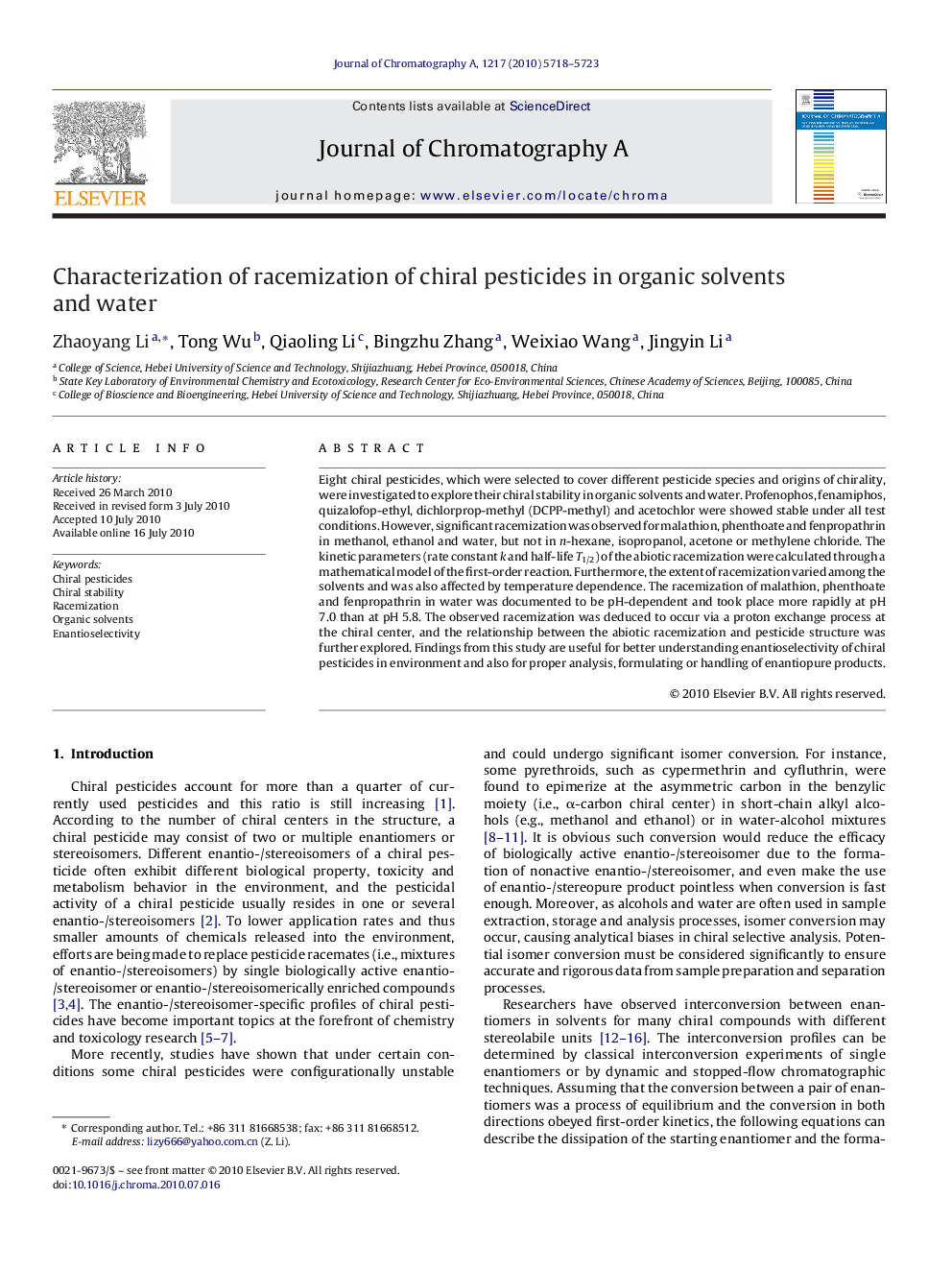| Article ID | Journal | Published Year | Pages | File Type |
|---|---|---|---|---|
| 1203017 | Journal of Chromatography A | 2010 | 6 Pages |
Eight chiral pesticides, which were selected to cover different pesticide species and origins of chirality, were investigated to explore their chiral stability in organic solvents and water. Profenophos, fenamiphos, quizalofop-ethyl, dichlorprop-methyl (DCPP-methyl) and acetochlor were showed stable under all test conditions. However, significant racemization was observed for malathion, phenthoate and fenpropathrin in methanol, ethanol and water, but not in n-hexane, isopropanol, acetone or methylene chloride. The kinetic parameters (rate constant k and half-life T1/2) of the abiotic racemization were calculated through a mathematical model of the first-order reaction. Furthermore, the extent of racemization varied among the solvents and was also affected by temperature dependence. The racemization of malathion, phenthoate and fenpropathrin in water was documented to be pH-dependent and took place more rapidly at pH 7.0 than at pH 5.8. The observed racemization was deduced to occur via a proton exchange process at the chiral center, and the relationship between the abiotic racemization and pesticide structure was further explored. Findings from this study are useful for better understanding enantioselectivity of chiral pesticides in environment and also for proper analysis, formulating or handling of enantiopure products.
